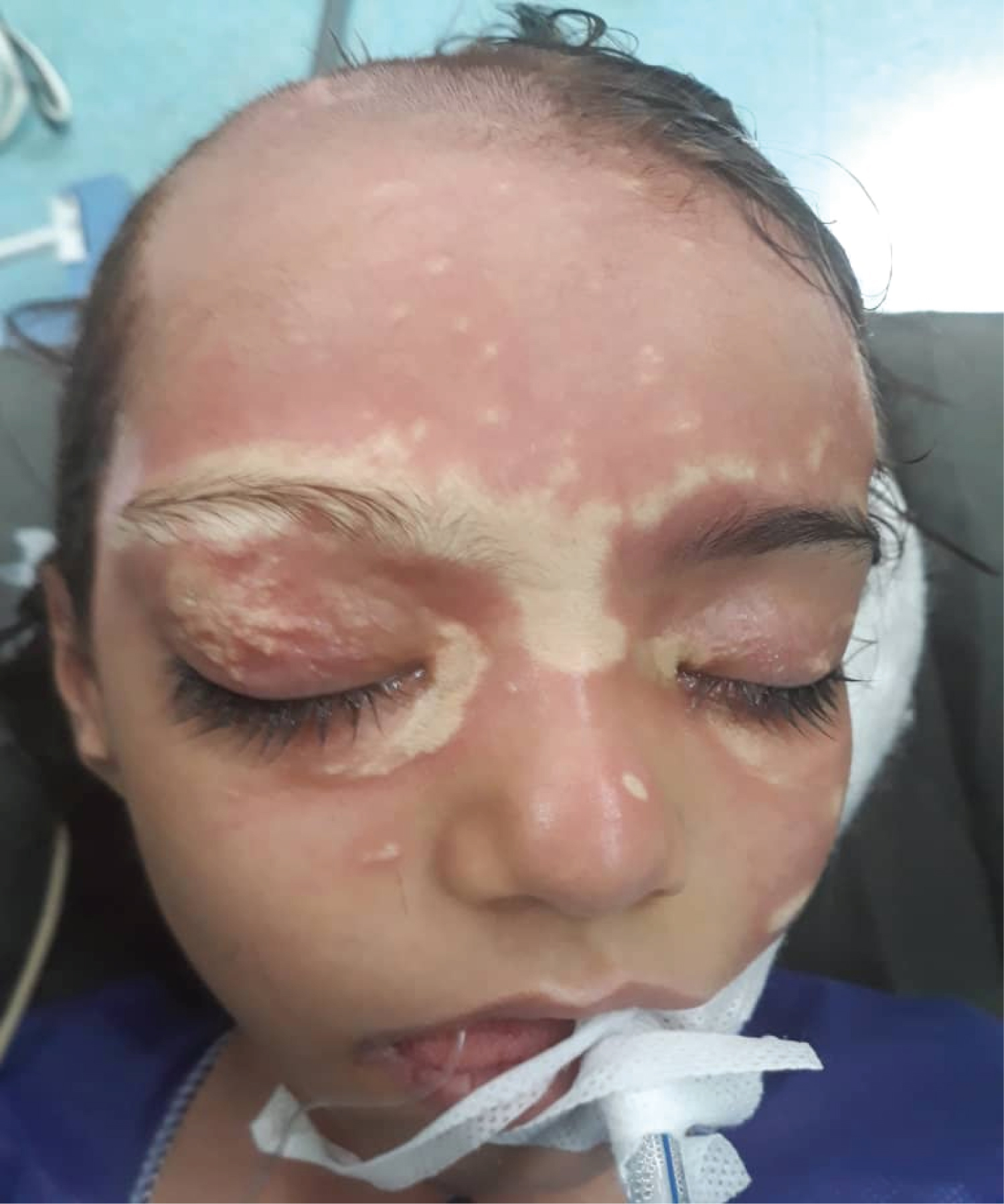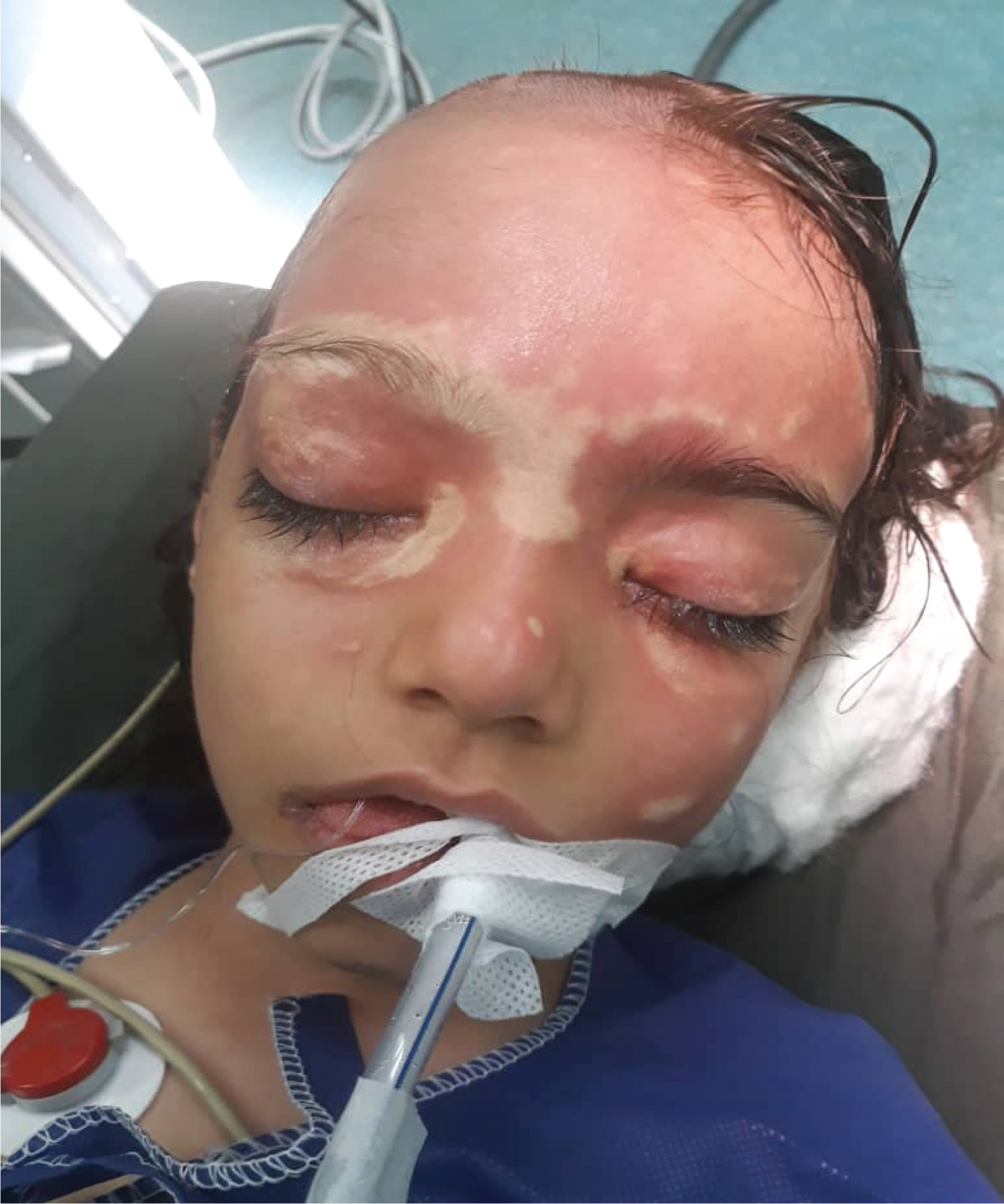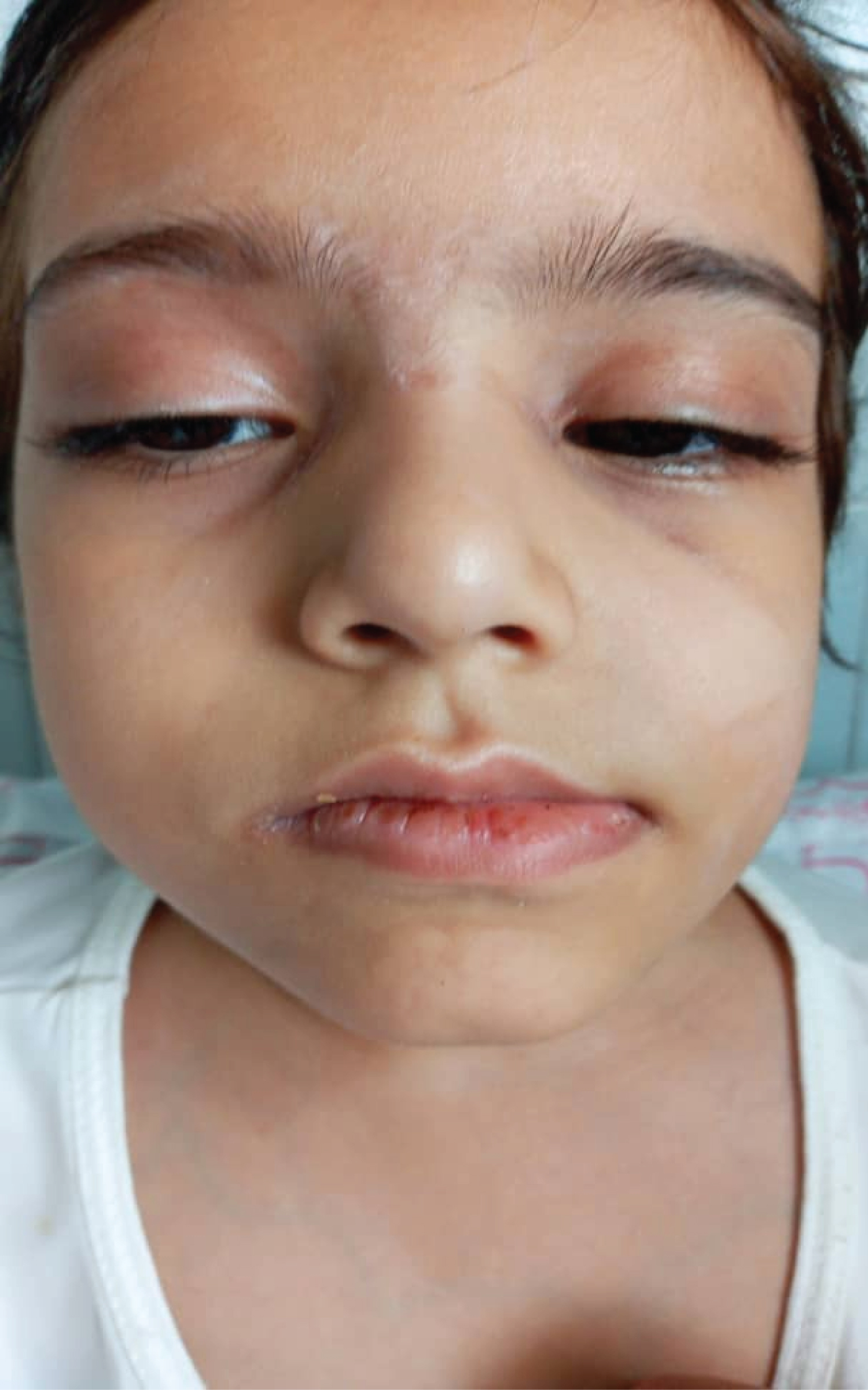Oxygenated water or hydrogen peroxide is a chemical compound with the formula H2O2. Oxygenated water is a common oxidant made from a combination of oxygen and hydrogen. Oxygenated water decomposes slowly in the absence of catalysts. This unstable compound decomposes under heat and decomposes into water and oxygen over time. This commercial material is sensitive to light and decomposes rapidly in the presence of light and is therefore stored in dark containers. This compound has antibacterial, cleansing and anti-dry properties for the skin in low percentages. But in higher percentages (30 to 70%) it can cause severe redness, erythema and even skin burns. Today, alcohol is widely used to preparation the skin before surgery to prevent infection at the site of surgery. Alcohol is also stored in dark containers to prevent unwanted chemical reactions.
The patient was a 7-year-old girl who was a candidate for ventriculoperitoneal shunt implant surgery due to hydrocephalus. According to the routine, 70% methanol was used for preparation the skin before surgery, which was kept in a dark container in the operating room (Figure 1). Unfortunately, oxygenated water was stored in a similar container in the operating room (Figure 2). Because of the similarity of the two bottles, the surgeon assisted in using oxygenated water for preparation. Following this, the patient's skin gradually began to become inflamed and red. As a result, the patient's skin gradually began to become inflamed and red, and the condition gradually worsened. An allergic skin reaction was initially suspected and intravenous hydrocortisone was used as treatment, which did not improve the condition. At first, an allergic skin reaction was suspected, and intravenous hydrocortisone was used as a treatment, which did not improve the condition. The surgeon later identified the underlying cause. The baby's skin was rinsed continuously with normal saline for 20 minutes. The patient was subsequently treated by a dermatologist. And after about a week, the baby's skin condition improved (Figure 3 and Figure 4) [1-9].
 Figure 1: One minute after contact with oxygenated water.
View Figure 1
Figure 1: One minute after contact with oxygenated water.
View Figure 1
 Figure 2: 3 minute after contact with oxygenated water.
View Figure 2
Figure 2: 3 minute after contact with oxygenated water.
View Figure 2
 Figure 3: 2 day after contact with oxygenated water.
View Figure 3
Figure 3: 2 day after contact with oxygenated water.
View Figure 3
 Figure 4: 7 day after contact with oxygenated water.
View Figure 4
Figure 4: 7 day after contact with oxygenated water.
View Figure 4
We reported this case as a bad experience to prevent recurrence in other operating rooms. This case emphasizes the need to check the items used in surgery before use by the surgeon himself. Also, the treatments used in this patient can be used as a successful treatment in similar patients.
A mistake made with this case showed that keeping oxygenated water and methanol together in the operating room is very dangerous.